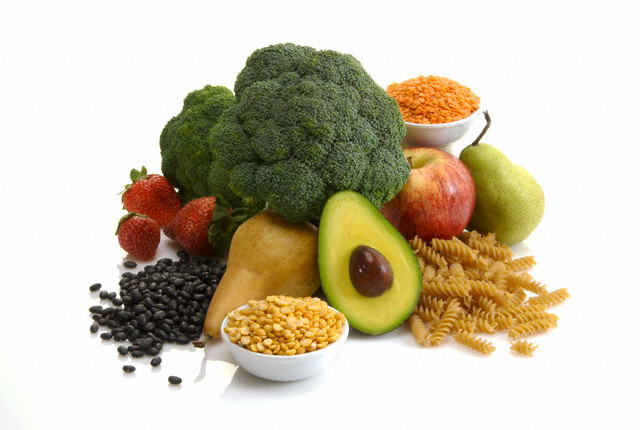How much fiber is required per day
How much fiber is required per day will depend on your calorie daily intake: for example the USDA suggests 14 grams of fiber for every 1,000 calories consumed. So someone eating 2,000 calories on a daily basis should obtain 28 grams of fiber daily. You may know by now that fiber is essential to great health, however, are you aware if you're getting enough? Most people aren't. The typical adult only eats 15 grams of fiber each day.

Women
need 25 grams of fiber each day, and males need 38 grams each day, based on the
Institute of medicine. Although the daily recommended amounts are slightly
different between the USDA and the Institute of medicine, they are still within
range of the daily recommended amount.
Good sources of fiber
Therefore, consuming more plant foods -- veggies, fruits, beans, nuts, and whole grain products, -- is the greatest way and is among the major recommendations in the U.S. government's 2010 Nutritional Recommendations.
These foods are high in nutrition, including fiber, and supply all the health advantages that accompany a diet that is rich in fiber. The best sources of fiber are: beans (all types), peas, bulgur, chickpeas, black-eyed peas, artichokes, wheat or grain flour, barley, bran, raspberries, prunes, and blackberries.
Other sources of fiber include: dark leafy vegetables, broccoli, okra, lettuce cauliflower, sweet taters, celery, pumpkin, taters using the skin, corn, snap beans, asparagus, cabbage, wheat grain pasta, oats, nuts, popcorn, raisins, bananas, pears, oranges, bananas, blueberries, mangoes, and apples.
Staying
away from refined grains -- such as white flour, white bread, white pasta, and
white rice -- and replacing all of them with whole grains is a great option to
boost the amount of fiber in your daily diet. The Dietary Guidelines say at
least half your grains are whole grains, however with the
many whole grain options that you have now, you can easily do even better than what is actually required by the guidelines. Whole foods are definitely the preferred way of getting fiber, because they provide you with the nutrients your body needs. Now that you know how much fiber is required per day, it would be at your advantage to start eating it today.
Low fiber symptoms
When you consume foods with little to no fiber you might be at risk of the following symptoms:
- Constipation
- Weight gain
- Blood sugar fluctuations
- Diet- related nausea and tiredness
- High Cholesterol
- Diabetes
- Cancer
- Hemorrhoids
- Irritable Bowel Syndrome
Here you can get more information of the above low fiber symptoms.
return from how much fiber is required per day to high-fiber food
New! Comments
Have your say about what you just read! Leave me a comment in the box below.